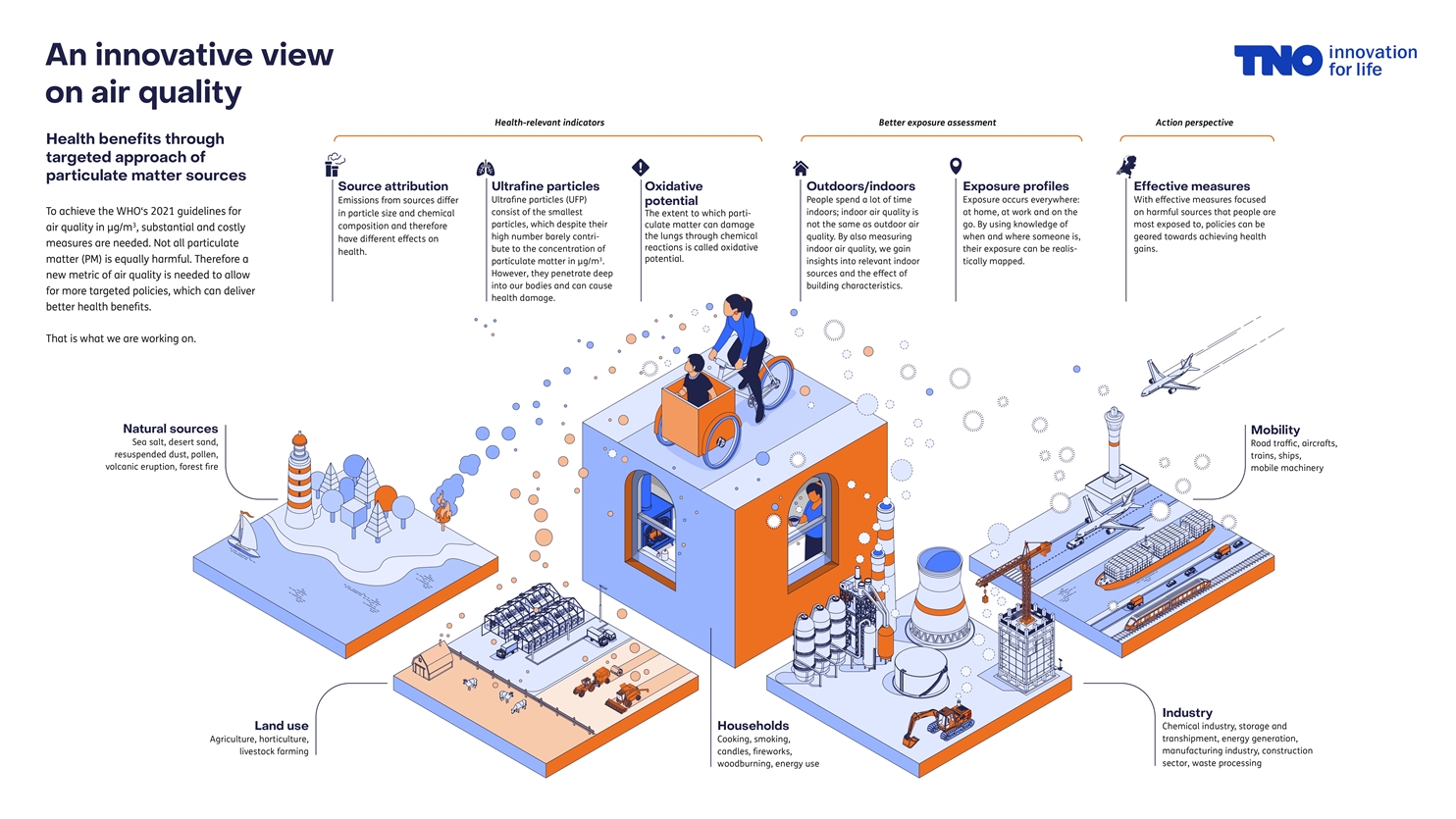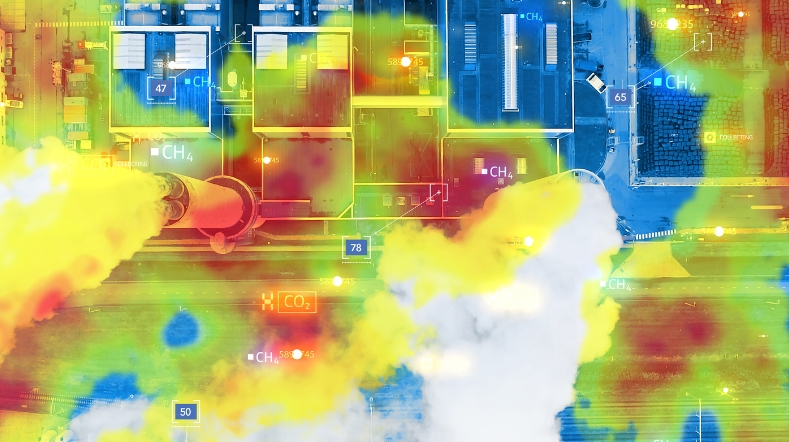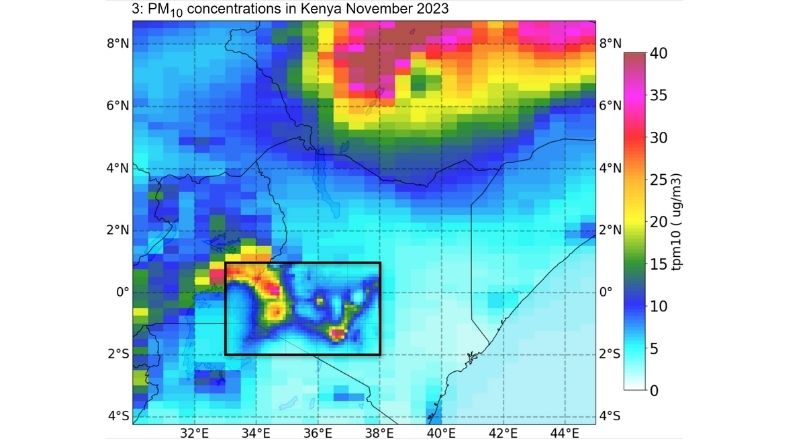
An innovative view on particulate matter
Exposure to particulate matter can significantly damage our health, as well as increase health care costs. Concentrations of particulate matter in the air have already declined significantly in the last decades, but it is unknown whether this is also true for its health damage and the associated costs. By targeting those sources that cause the most damage, we can achieve more health gain. That is why we are researching innovative ways of looking at particulate matter.
Particulate matter and health
Exposure to particulate matter causes 9,000 premature deaths in the Netherlands every year. The resulting direct health care costs amount to approximately half a billion euros per year. When accounting for the amount of life years lost, this even amounts to an estimated 10 to 15 billion euros annually.
This goes to show that particulate matter is still a serious problem, even though particulate matter concentrations in the Netherlands have fallen in recent decades.
The approach to particulate matter has so far focused on reducing the total concentration in the air. But we already know that not all particulate matter is equal: while sea salt particles cause little harm, particles from a diesel engine can be carcinogenic. Moreover, a part of particulate matter is not yet accounted for, specifically ultrafine particles. In other words: there is room for improvement.
TNO develops innovative view on particulate matter
Earlier, we described our vision on this in our paper ‘Particulate matter: standard achieved, problem unsolved’. Now, we have also initiated a research programme to put this vision into practice. Here, we explore methods of looking at particulate matter differently – not expressed in mass concentration (µg/m3) as it currently is, but in health-relevant indicators.
We are also trying to obtain a better picture of the actual exposure, so the relationship with health can be established more strongly. Together, this will provide the handles for better policymaking aimed at achieving the most health gains.

Health-relevant indicators
Particulate matter is characterised by the size and composition of its particles. Because small particles penetrate deeper into the body, they are likely to be more harmful than larger particles. There could also be substances present in and on the particulate matter that are very harmful (such as PAH or heavy metals), as well as substances that have limited health effect. Size and composition thus together account for the health damage caused by particulate matter, and these factors vary considerably per source and in time and place.
This is why indicators related to particle size or composition might be a better measure of the health impact of particulate matter than mass concentrations (µg/m3), which treats all particles as equal.
- The first route we follow is to distinguish between sources: which ones are the most harmful and need to be addressed as a priority? And which ones less so?
- The second way is to take ultrafine particles into consideration. These weigh very little, so they make up very little of the particulate matter concentration in µg/m3. Even so, there is evidence that it is specifically ultrafine particles that cause health damage. Moreover, the sources that emit considerable amounts of ultrafine particles are not the same ones that emit considerable amounts of particulate matter.
- Thirdly, we look at oxidative potential. This measures the extent to which particulate matter can cause reactions in the lungs, thereby leading to damage.
All three of these indicators contribute, each in their own way, to distinguishing particulate matter based on health impact.
A better view on exposure
To obtain a really good picture of the health risks posed by particulate matter, we need to know to what extent we are exposed to it. Particulate matter concentrations are now mostly measured outdoors, but we spend a large part of our time (approximately 80%) indoors.
For this reason, we are also looking at indoor particulate matter concentrations and their characteristics – including the indoor sources that contribute to them, their relationship with outdoor air concentrations, and how building properties affect this. Besides at home, we are also often elsewhere: such as during commute or at work.
By including exposure at those places as well, we can make the overall picture increasingly accurate.
Effective measures
With more insight into the sources that emit harmful particulate matter and a more accurate picture of actual exposure, we are better able to determine effective measures. In doing so, we give government bodies and companies the handles to shape new, effective policies aimed at health benefits.
Will you join us?
This work is not something exclusive to TNO, of course. We work together with other research institutes, as well as government bodies and companies. This keeps our research on the right track, and ensures that the knowledge we develop matches what is needed to make better policies.
If you would like to know what we can do for your municipality, province, or company, do get in touch with us through the contact information below.
Get inspired
Report: 1st Dutch National eDNA Workshop


Environmental DNA: TNO charts a new course for biodiversity monitoring


Tracking sources of greenhouse gases with satellites


This is our time: Eleonie van Schreven’s work on small satellites with a big impact


ATACH selects TNO model for climate-related health risks in Kenya



